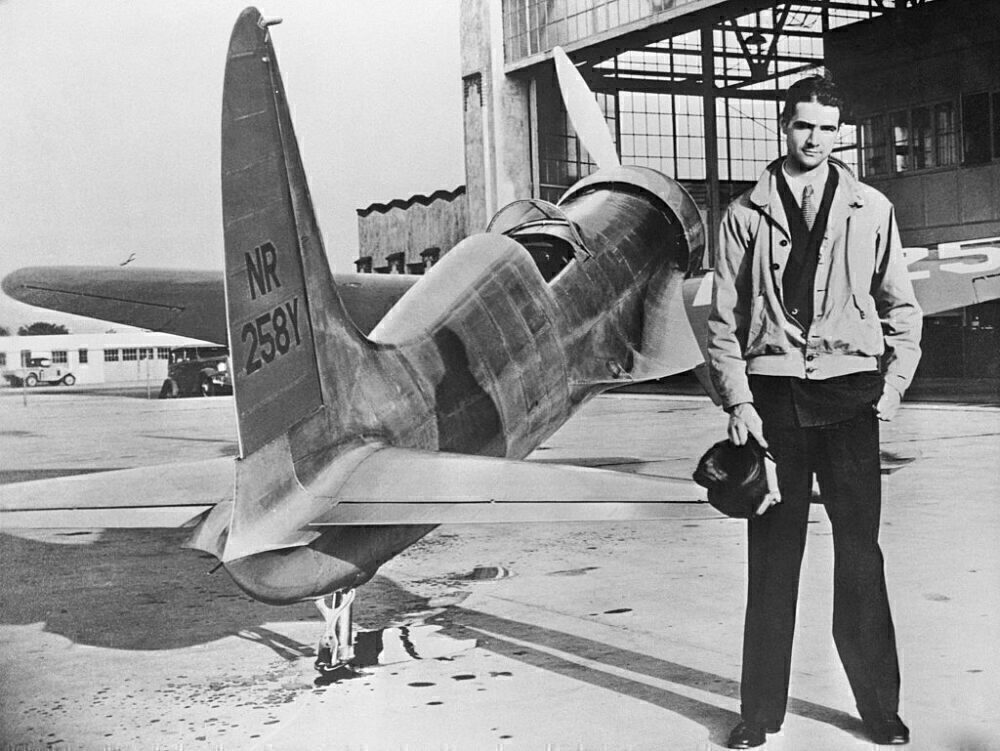Throughout the course of aviation history, certain names have reflected significant changes to the world of flying as we know it. American business magnate Howard Hughes holds such a legacy, which left a permanent mark on aviation. Let’s take a look back at Hughes’ action-packed life as an aircraft designer, pilot, and airline executive.

The early years
Howard Hughes was born on Christmas Eve in 1905, and quickly developed an interest in mechanical pursuits. As Simple Flying explored in July 2020, this culminated in Hughes taking his first flying lesson aged just 14 years old. This sparked a passion for aviation that would play a significant role throughout the remainder of his life.
In the 1930s, Hughes became known in aviation circles for setting several speed records. For example, in September 1935, he set a landplane airspeed record of 352.46 mph (567.23 km/h) near Santa Ana, California. What made this attempt particularly special was that he did so in an aircraft that he had designed himself, known as the H-1 Racer.
Stay informed: Sign up for our daily and weekly aviation news digests.




Hughes also set a transcontinental (Los Angeles-Newark) speed record in this aircraft in 1937. The record-breaking flight took just under seven-and-a-half hours, averaging 322 mph (518 km/h). In July 1938, Hughes also set a round-the-world record of just 91 hours 14 minutes in Lockheed L-14. This beat Wiley Post‘s existing record by nearly four days.
Airline exploits
As well as making waves as a record-breaking designer and pilot, Hughes also entered the airline world in the 1930s. He did so by buying stock in TWA, at the encouragement of its President, Jack Frye. Hughes began these purchases in the late 1930s, and had obtained a controlling interest in the airline, which was founded in 1930, by 1944.




Under Hughes’ post-war leadership, TWA went from strength to strength. It began transatlantic services to the likes of France, Italy, and Egypt in 1946. Its fleet also blossomed under Hughes, who personally financed the airline’s 40-aircraft Lockheed Constellation order. This was worth $18 million, and was the largest order in aviation history at the time. This left a permanent impact on US aviation, as the aircraft unlocked non-stop transcontinental services.
Although Hughes left TWA in 1960, his leadership had put the airline strongly on the map, and laid the foundations for its jet-age growth. He went on to acquire Northeast Airlines in 1962, although he sold control of the carrier two years later.
His next acquisition was Air West in 1970, which he renamed Hughes Airwest and led through another extensive growth period. Under Hughes’ leadership, the carrier had transitioned to an all-jet fleet by the end of the decade.




Its route network also expanded significantly out of its San Francisco hub, serving Canada and Mexico, as well as domestic destinations as far east as Houston and Milwaukee. Republic Airlines eventually acquired Hughes Airwest in 1980. The carrier was subsequently merged into Northwest Airlines, which itself was merged into Delta in 2008.
The world’s largest flying boat
As an aircraft designer, Hughes had previously specialized in small, lightweight aircraft that were well-suited to his pursuits of speed records. However, after the Second World War, he made history by flying a rather larger aircraft. This was a wooden flying boat designed for strategic airlifts by the Hughes Aircraft Company, and known as the H-4 Hercules.
The need to construct the aircraft out of wood arose due to wartime restrictions on the use of aluminum. Indeed, the aircraft had initially been planned to be used during the war, although, ultimately, it was not completed in time. Nonetheless, Hughes opted to run taxi tests on the aircraft in 1947, culminating in a 26-second period of flight covering approximately one mile. This vindicated the project’s government funding by proving that it was air-worthy.




The aircraft is the largest flying boat ever to have been built, and its 98-meter wingspan was the largest in aviation history until as recently as 2019. Its wooden nature led it to be given nicknames such as the Flying Lumberyard and Spruce Goose.
Hughes himself was not fond of the latter of these. Nonetheless, its legacy as a record-breaker is still celebrated today, with it being preserved in good condition at Oregon’s Evergreen Aviation & Space Museum. Meanwhile, the legacy of Hughes himself is present today in the form of the Howard Hughes Corporation and the Howard Hughes Medical Institute.



